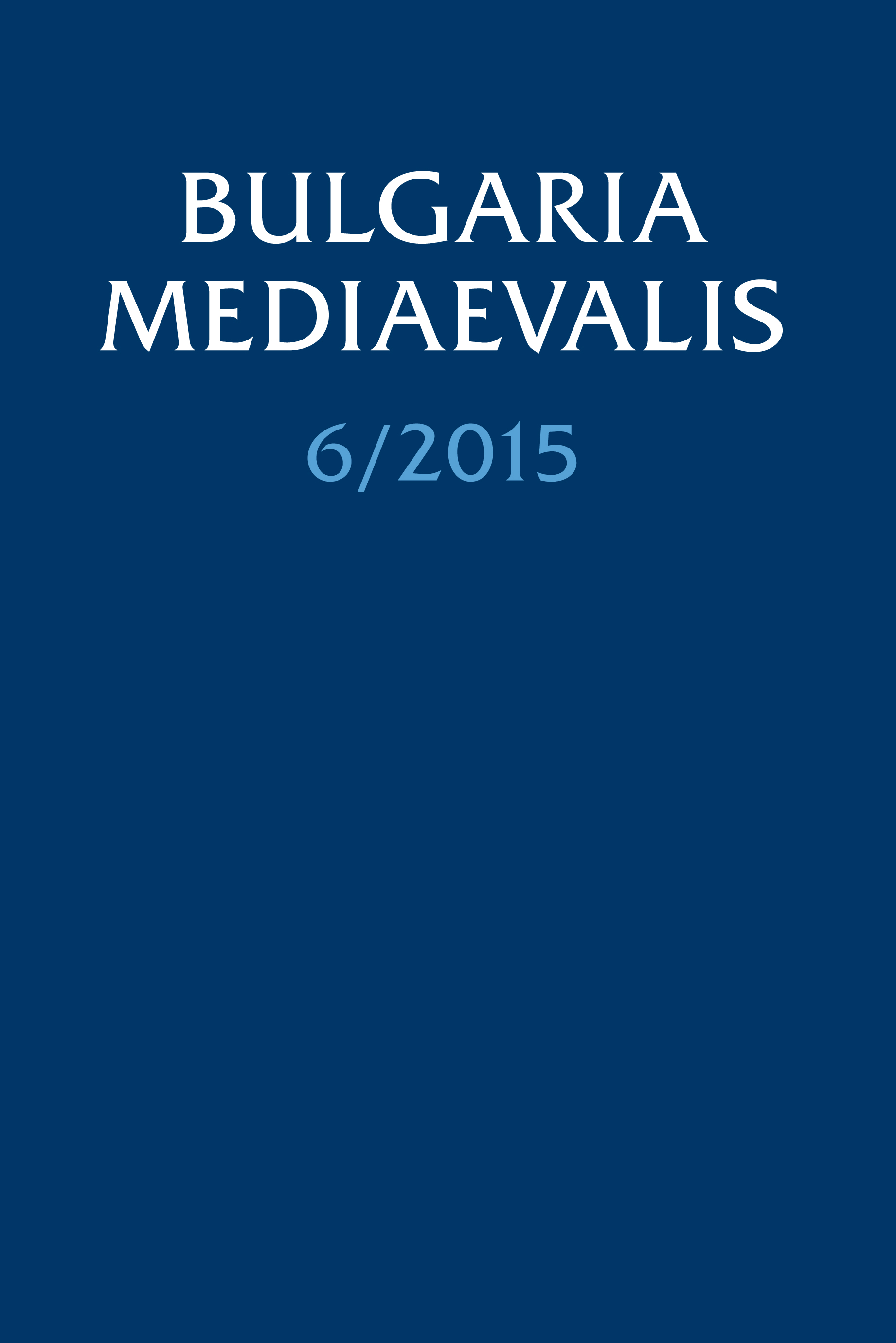
We kindly inform you that, as long as the subject affiliation of our 300.000+ articles is in progress, you might get unsufficient or no results on your third level or second level search. In this case, please broaden your search criteria.


After the ancient Turkic period Oguz people have settled in Azerbaijan at the west of the Caspian Sea and from the east side in the Western Turkestan. Uygur and karluk people have taken places at the east of Turkestan, Kypchaks at the north of Turkestan. At the XI century the ethno-geographical parameters have extended to the Eastern Europe and the Asia Minor, and to the X-XI centuries the process of definition of geographical borders of Turkic ethnos comes to the end. The generated Moslem doctrine have been incorporated in the syncretic form with the national colour and perceived as the Turkic-ethnic thinking. The concepts and the gnoseological representations existing before the Moslem period were forgotten. As a result of it, the basic propagation of Islamic ideas passes from Arabs to Turkic.
More...
Suriye, toprakları üzerinden çeşitli medeniyet ve kültürlerin geçtiği ve pek çok istilaların, hadiselerin meydana geldiği, eski ve kritik bir mevkiye sahiptir. Ülkeye ilk yerleşenler Hazret-i Nuh’un oğlu Şam’dan türeyen ve Sami dilini konuşan Samilerdir. Müslümanların Suriye’ye hakim olmasına kadar bölge Amoritler, Fenikeliler, İbraniler, Hititler, Persler, Makedonyalı İskender, Roma ve Bizans imparatorlukları idaresinde kaldı.
More...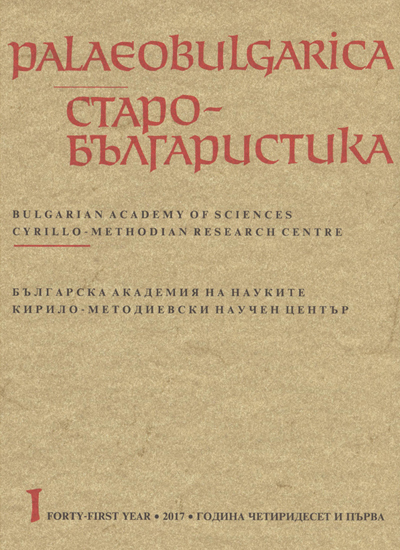
À negative opinion on the reign of the Bulgarian Tsar Peter I (927–969) is sometimes still present in the scholarly literature. He has been described as a weak ruler without any serious political ambitions, pious and focused on religious matters, but neglectful of issues crucial for the Bulgarian state. His reign is said to be marred by byzantinisation of the court and the state itself, a passive response to the Hungarian raids, and the spreading of bogomilism. Peter is thus said to be guilty of the Bulgarian fall of 971. The article aims at a reconsideration of Peter’s rule and the authors present arguments in favour of a more balanced evaluation of the Tsar and his times.
More...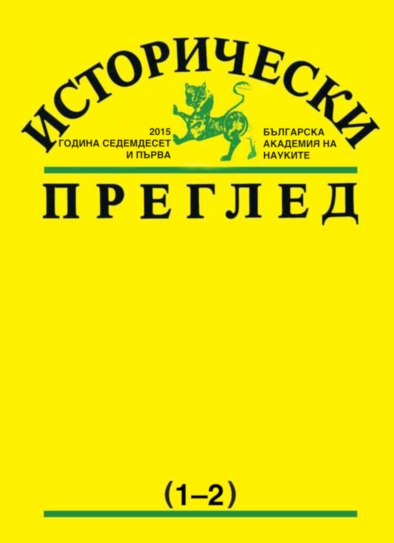
There is some wavering among the historiographical guild whether during the early Middle Ages Bulgaria had its Patriarchate and to what degree it was legitimate. Bulgarian Archbishopric was established in 870 by council, i. е. canonically. There was an archbishop at its head. Institutionally it was dependent on the Patriarchate of Constantinople, which considered its diocese as part of its own and its rank and the range of its territory was determined by the emperor in accordance with the rules in the empire defined by the relations between the Church and secular power. In the period 934–944 the Bulgarian church became autocephalous. It is more complicated to define the status title of the Bulgarian ecclesiastical head due to lack of contemporary sources. Here, as the main source for the existence of autocephalous Bulgarian Patriarchate the list of Du Cange is used. The analysis of its contents, structure, objectives and the ideas it contains prove that the center of his intentions is, on the one hand, to display that the Ohrid Church is continuation of Bulgarian church from before 1018, on the other hand, to indicate the status of the latter as autocephalous. And here the text of Du Cange brings something which does not appear in other sources. In his intention to highlight the highest status of the Ohrid Archbishopriche added that besides autocephalous status, Bulgarian church during the reign of Tsar Peter gained patriarchal status. On the background of the analysis of the status, rank and title of the Constantinople patriarchy, the Patriarchate of the First Bulgarian Kingdom occupied significantly lower level as a local one. Its appearance did not infringe the Pentarchy nor did it encroach upon the universal, apostolic nature of the Church of New Rome. However, it was the first Patriarchate of the newly converted peoples from the area of the Eastern Orthodox nations.
More...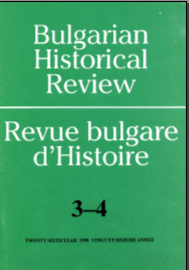
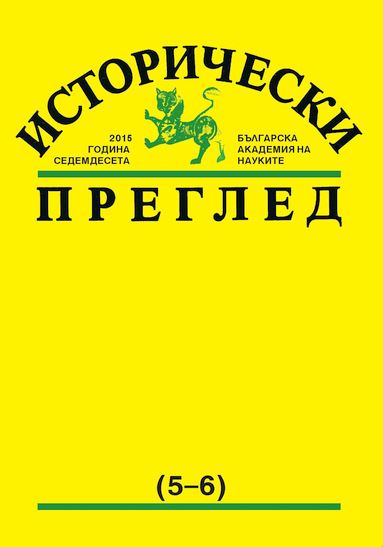
The studies on coin circulation in medieval urban centers during the 12th-14th centuries are strongly represented in Bulgarian historiography. The author explores the whole numismatic material of various fortresses. A complete comparison between individual fortresses during this period has not been made. The aim of the present study is to attempt to analyze the economic status and development of the large urban centres in the period of the Second Bulgarian Tsardom – Ryahovets, Cherven, Shumen and Ovech, based on the published numismatic material from these cities.
More...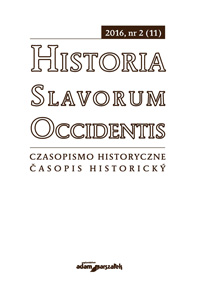
The text analyses the problem of the sanctity of rulers, especially non-martyrs, in Latin Europe in the Early and High Middle Ages. The starting point for this discussion is a frequently asked question about the reasons for the lack of such a phenomenon in Poland.
More...
The paper discusses the issue of worship and imitation of Charlemagne during the reign of Bolesław the Brave in the context of the ruler’s responsibilities and the legitimacy of royal power. The analysis includes primarily the Christianization activity led by Bolesław and a later legend of the ruler.
More...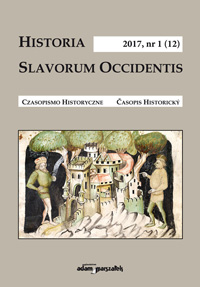
The author traces the origins and the development of the Přemyslid princes’ ideology, who would rely on the charisma of their predecessor on the Czech throne, Saint Wenceslas. In the historical documents, on coins and seals, she traces the development of the position and function of the oldest Czceh saint and Czech patron and the enlargement of the company of the Czech monarch’s and his people’s protectors after accepting Saint Adalbert and Saint Procopius.
More...
This article examines the collection of Slavic Cyrillic manuscripts XIII-XVIII centuries which are kept at St. Panteleimon Monastery on Mount Athos. The characteristics of common and distinctive features manuscripts are distinguished by their national differences. The collection is divided into three types of membership books. Research results revealed chronological, geographical and genre differences manuscripts which finally confirmed their belonging to certain national traditions and the role of the collection – the treasury of Slavic national culture.Addressing the problems of Ukrainian Greek bonds XVII-XVIII centuries and overlapping themes, features of the spiritual culture of Ukraine and Greece of said period, manuscript heritage of both countries certainly attract great attention. The present research is Slavonic (Cyrillic) manuscripts Saint Panteleimon Monastery St. Mount Athos. The first information about the availability of Slavic Cyrillic manuscripts on Athos reaches 1142 years. Athos is closed to outside view and interventions territory. That’s why exactly in the monasteries of St. Mount manuscript treasures should be looked for. Perhaps it’s is unique in its content, as well as the Greek and Slavic origin. A Panteleimon Monastery is considered to be "rus" monastery. His second name is Rusyk. Therefore Slavonic (Cyrillic) Manuscripts should be looked for exactly here.The survey showed that 44 of the 10 reviewed manuscripts belong to the sacred-church books, 13-to church and prayer books, 21-to other books. At the same time this manuscript is distributed by chronology and geography in a very interesting way. According to the chronology of the whole entire collection spans the period from the XIII to the XVIII century.The sacred- religious manuscripts date from XIII to XVII., Liturgical church – from XIY to XVII., and other books– from the end of XV to the end of XVIII century. As already mentioned above, a collection has 75 codes which chronologically apply until XIX century. However, for this research the deadline is XVIII century. So, the gradation is clearly visible in kind of "aging" of sacred- church manuscripts after XVII century. In this collection manuscripts have not been updated. Situation is slightly better with the church and liturgical manuscripts. But at the same time, in the XVIII and XIX centuries they weren’t updated. Other books on the contrary appear in collection much later than the other (2 centuries), but at the same time have a privilege over the other and only retreat in the XIII century. This can be explained by the fact that other books on various topics, besides worship, began to appear on Mount Athos from the time when there was a relaxation of the strict statutory orders. Lack of updated books of the first two groups , is explained that the old monasteries had enough of old codes, or there was no need to update the Slavic manuscripts for liturgical practice. Because worship were done in Greek with Greek books, with the Greek ordinance.Yet it remains unclear why, since the XVIII century. Changed dramatically genre filled collection? Really, at least in the form of gifts or brought books, clergymen and church liturgical Church Slavonic (Cyrillic) literature did not get to the monastery? The impression is that the practical liturgical Slavic literature or intentionally destroyed (sold, granted), or stored in other collections. No less interesting is the geography of Slavic manuscripts in this collection. Referring to the table. Only 44 of the manuscript. With 10 sacred – Church books – only one has and one Bulgarian – Macedonian ( Skopje) origin. Nine manuscripts – Serbian. With 13 codes church – religious literature – eleven manuscripts have rural origins – one – Bulgarian , and most interestingly – one Ukrainian origin. And the Ukrainian book belong to Typicon VII. – liturgical charter church. It turns out that was not indifferent to the monks of St. Panteleimon Monastery in Slavonic liturgical practice . And the reason for the disappearance of religious literature of the late time of collection must be sought in other situations.Geography of other books is more diverse than theological literature. With 21 manuscripts represented in the collection of 6 -. Serbian, and it again early manuscripts chronologically completed in XV, Bulgaria is traditionally presented by one manuscript.Among other books are collections of two manuscripts, representing Ukrainian tradition. This collection of XVIII century, which included the works of the Holy Fathers and the Church Chronicle Exclusionary Dmitry of Rostov (Tuptalo) 1706.In addition to these two distinct Ukrainian manuscripts in the collection contains 6 more manuscripts, may belong to either Ukrainian or Belarusian or Russian tradition. These books were written in the modern form of the Church Slavonic letters, adapted (Russified) letters of XVIII century. In addition to these 6 manuscripts in the collection are five manuscripts written in Russian.Hence and by geographical and chronological description of the collection is clearly divided into two parts: Until the XVII century. It’s mainly Serbian manuscript. Since the XVII century. They are codes in Ukrainian-Belarusian-Russian traditions. Bulgarian tradition in all three types of books presented in a single code for each type.Now, as a genre filled collection. Among the sacred religious books-no Psalter, although no church cannot do without this book in practice. A Church of theological literature there are no systematization. There were presented rare examples of a particular literature, and no complex liturgical books. This suggests that the Slavic manuscripts in this collection do not provide for the liturgical practice, and saved as monuments, exponents of certain cultural traditions, language, church philosophy, art Slavic countries: Serbia, modern Macedonia, Bulgaria, Ukraine, Russia, Belarus and possibly Cyrillic Romania. Clear evidence of this hypothesis is the Bulgarian tradition, as mentioned above, is represented by one code for each of the three books.For Ukrainian culture opening a salient three Ukrainian manuscripts: Typicon XVII., Collection of the XVIII century. And Chronicle Exclusionary Dmitry of Rostov (Tuptalo) 1706 Presence in the collection of these three books for the Ukrainian Cultural Heritage is a godsend, and confirming the presence of Ukrainian books, and hence the tradition of Mount Athos in Greece.
More...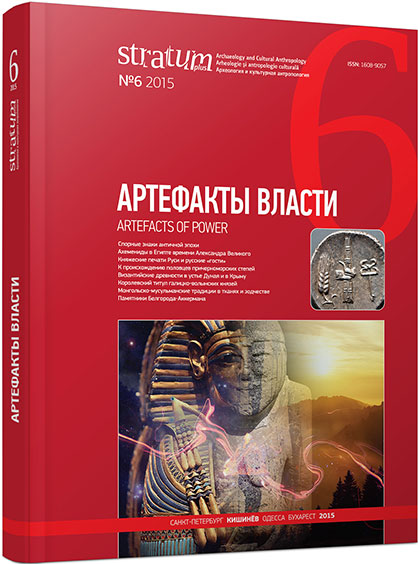
The article deals with the history of the term gosty ('guest') during the whole period of its existence (the 9th—17th centuries). Basing on the information analyzed, the author affirms that contrary to the prevailing historiographical tradition, the term did not change its meaning throughout the considered time period.As early as in the 9th—10th centuries “guests” were business representatives and trade and fiscal agents of the government and high-ranking individuals, as was reflected in the application of the Byzantine term “πραγματευτής” to the term “guest” (Constantini Porphyrogeniti imperatoris. De Ceremoniis aulae Byzantinae).The choice of the sixteenth century as the turning point when the “guests” ceased to be mostly merchants and became fiscal agents of the government seems erroneous. The mistake should be most probably associated with an incorrect translation of sources, when the perception of the synonymous usage of the words “guest” and “merchant” had led to the distorted meaning of the text.
More...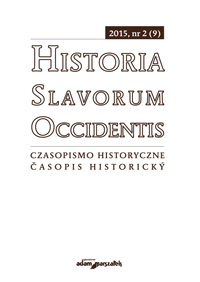
The paper examines a collection of nineteenth-century photographs housed in the Iconographic Laboratory of the Special Collections Department of the University Library in Poznań. These unique photos were taken by Regierungsrat Meydenlender in 1887. Some additional prints of Meydenlender’s photos are also kept in the Museum of the City of Poznań. Illustrating the state of preservation of the Church of the Blessed Virgin Mary in Inowrocław, showing the then damage to its walls and alternations done to the church in the course of 1900–1902 reconstruction, the photographs provide a valuable source for any conservatory works. The article explores several issues related to this barely known photographic material.
More...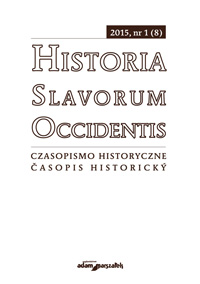
The economic boom, driven by the demand for slaves and furs in the countries of the Middle East and Middle Asia, the Maghreb and al-Andalus, and the resultant silver flows coming into the peripheral zone of Europe, permitted or facilitated the formation of early centres of power. In Wielkopolska, fur from tributes and people captured during raiding expeditions were traded for ores and luxury goods. These, in turn, were used to pay for the retinue (družina). Therefore, prestige and silver constituted the basis of ‘central’ power, conditioned the support for the power and thus its continued reign. The Czech lands were an important link in the transcontinental trade con-necting Khazaria and Hungary with al-Andalus. The Přemyslids’ power relied heavily on the income arising from the control over the routes passing through Prague. Nevertheless, their reign, notably Boleslav I’s, was also founded upon the organisation of slave export, a factor driving and regulating the Bohemian political economy throughout the second half of the tenth century.
More...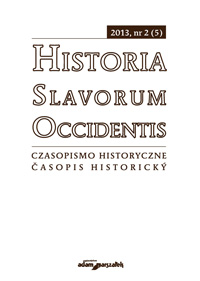
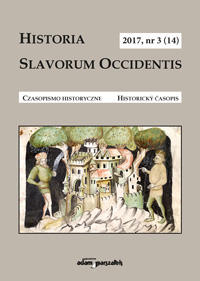
This paper outlines the processes of Christianisation taking place in Polabia and Pomerania between the tenth and twelfth centuries. It looks at actions aimed at converting the communities and subsuming them under the structures of church organisation, closely related to the monarchy. These were shown on the basis of accounts that originated in milieus involved in the Slavonic missions: The Chronicle by Thietmar, the Bishop of Merseburg (d. 1018); The Chronicle of the Slavs by Helmold of Bosau (d. 1177); and the hagiography of St Otto of Bamberg (d. 1139), composed during two decades after his death and including St Otto’s report on his first Baltic mission from 1125.
More...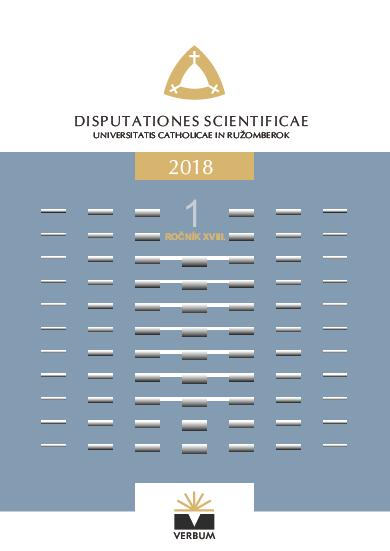
The Author of the present paper introduces a Polish reader to an anonymous manuscript discovered in a Swedish library in Norrköping. Author (originally, the matter was connected with Ludwik de Geer's private book collections from the library in his castle in Finspong). After a graphology analysis had been done by Arild Jägerskogh, it turned out that the described Finspongish manuscript, actually, has its author, the famous „teacher of the nations”, Jan Amos Komenský. It was the manuscript of the seventeenth century which is entitled De Rerum humanarum Emendatione CONSULTATIO CATHOLICA ad Genus Humanum. Ante alios vero Ad Eruditos Europae, consisting of an introduction Europae lumina – in Czech Světlům Evropy – (of 18 pages) and the so called, in Czech, Dedikace Nejmocnější trojici severských království v Evropě (of 2 pages). The manuscript was found by Blanka Karlsson, a Czech researcher of Komenský's works, at the end of the XXth century.
More...
The present study points out that a passage in the exegetic work of Saint Gerard, bishop of Csanád (Hungary) (Gerardi Moresenae aecclesiae seu Csanadiensis episcopi Deliberatio supra hymnum trium puerorum, Bayerische Staatsbibliothek München, Clm 6211, 123v —124r , ed. Gabriel Silagi, in CCCM 29, 1978, lib. VII, 971—994) is partly a word by word quotation, and is partly a paraphrase from Tractatus sive homiliae in psalmos of Saint Jerome (S. Hieronymi presbyteri Tractatus sive homiliae in psalmos, in Marci evangelium aliaque varia argumenta, ed. D. Germanus Morin, CCSL 78., 1958, p. 281). It was formerly thought by several medievalists, based on this locus, that the author, on writing about Manichaeans and “Greeks”, might have alluded to the Bogumilism as a contemporary heresy in the Balkan. (Moreover, the entire work is considered an anti-heretical tractate, by the interpretation of this and similar loci.) Since the passage is a mere quotation of an antic text, it cannot be a proof of the spreading of Bogumilism in Hungary in the 11th century. Finally, Saint Gerard’s additions referring to his own age do not mean that he applies Jerome’s text concretely to a certain heresy, but they warn the reader only to the incessantly present danger of heretical thinking. (This was at that time, in the early Christian Hungary, the actual threat of relapse to paganism.)
More...